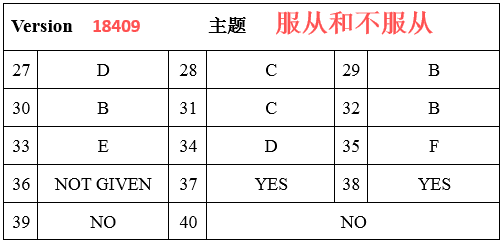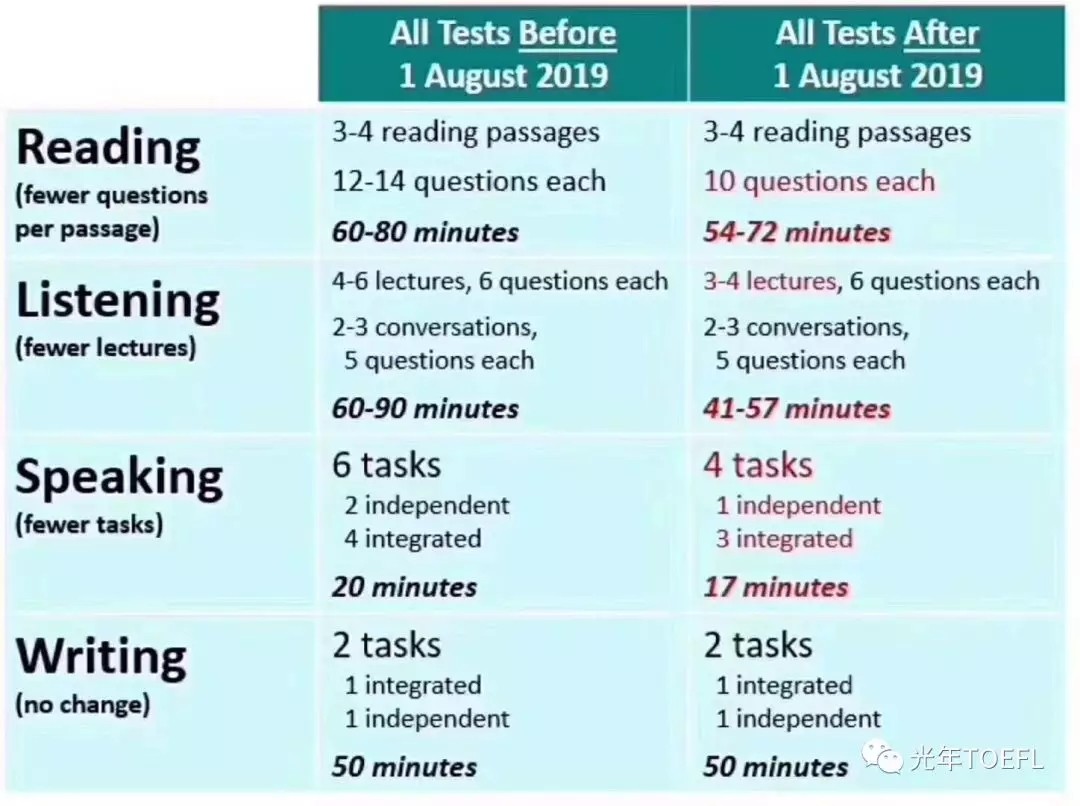细数托福阅读6大热门出题点 ,这些高频考点阅读中要重点关注,下面小编就和大家分享细数托福阅读6大热门出题点,希望能够帮助到大家,快来学习一下吧。
细数托福阅读6大热门出题点
1. 主题段和主题句关键词
托福阅读文章中的主题段和主题句是每一个段落的主题,也是文章的要点,都是参与搭建文章结构的,因此记录它们中的几个关键词对于把握全文的结构非常重要。同时,文章中有很多的重要信息,而且阅读文章后面的题目大都是根据主题而出,考生在解答题目的时候,可以快速根据主题句找到对应的段落。
2. 时间线索和数字数据
一般来说,出现时间概念的文章或段落通常和时间顺序有关,作者会用不同的时间点串出一条时间线索。而个别数字的出现则意味着这个数字所阐述概念的重要性是不容忽视的。因此,除非文章中出现了数据堆积的现象,否则考生都需要把数字记录下来。
3. 人名地名以及专有名词
人名、地名以及专有名词出现的时候,一般都会出现大写字母或引号等标记,非常有利于信息索引和定位。当提到这几个具体的概念时,文章通常是在用这些概念说明某个理论或者观点,因此记录下这些概念对于理解相关理论和观点可以起到一定的辅助作用。
4. 举例内容的主体部分
有的时候,为了说明某些理论和观点,文章中会出现大段的举例文字。实际上,托福阅读考试中考查这些例子具体内容的时候非常少,而更多的是考查作者使用这些例子的原因或它们所证明的观点。因此,考生在快速记录的笔记中只需要记录下例子是什么就可以了,至于例子中所阐述的具体信息,可以适当忽略。
5. 新概念和核心概念
所谓“新概念”是指当考生读到文章某个位置时,之前没有出现过的概念。这种新概念的出现,说明之前出现的概念已经不能够说明问题。所以,新概念的出现必然也意味着一个重要信息的出现。而“核心概念”是指在连续的几个段落中集中阐述的主题概念,对于这种概念来说,无论是作为观点还是举例大家都应该注意,因为它显然是作为重点在文章中被强调的。
6. 重要的逻辑关系链
很多考生在托福阅读文章的时候只注意到了文章所阐述的重要内容,但是忽略了信息之间的逻辑关系,因而对信息关联理解不准确,这也是一种严重的错误。因此,在阅读过程中记录下信息之间所产生的逻辑关系可以避免考生丢失信息之间的关联信息。记录逻辑关系也可以帮助考生更加清晰地理清段落之间的关系。
托福阅读真题原题+题目
The Arts and Crafts Movement in the United States was responsible for sweeping changes in attitudes toward the decorative arts, then considered the minor or household arts. Its focus on decorative arts helped to induce United States museums and private collectors to begin collecting furniture, glass, ceramics, metalwork, and textiles in the late nineteenth and early twentieth centuries. The fact that artisans, who were looked on as mechanics or skilled workers in the eighteenth century, are frequently considered artists today is directly attributable to the Arts and Crafts Movement of the nineteenth century. The importance now placed on attractive and harmonious home decoration can also be traced to this period, when Victorian interior arrangements were revised to admit greater light and more freely flowing spaces.
The Arts and Crafts Movement reacted against mechanized processes that threatened handcrafts and resulted in cheapened, monotonous merchandise. Founded in the late nineteenth century by British social critics John Ruskin and William Morris, the movement revered craft as a form of art. In a rapidly industrializing society, most Victorians agreed that art was an essential moral ingredient in the home environment, and in many middle- and working-class homes craft was the only form of art, Ruskin and his followers criticized not only the degradation of artisans reduced to machine operators, but also the impending loss of daily contact with handcrafted objects, fashioned with pride, integrity, and attention to beauty.
In the United States as well as in Great Britain, reformers extolled the virtues of handcrafted objects: simple, straightforward design; solid materials of good quality; and sound, enduring construction techniques. These criteria were interpreted in a variety of styles, ranging from rational and geometric to romantic or naturalistic. Whether abstract, stylized, or realistically treated, the consistent theme in virtually all Arts and Crafts design is nature.
The Arts and Crafts Movement was much more than a particular style; it was a philosophy of domestic life. Proponents believed that if simple design, high-quality materials, and honest construction were realized in the home and its appointments, then the occupants would enjoy moral and therapeutic effects. For both artisan and consumer, the Arts and Crafts doctrine was seen as a magical force against the undesirable effects of industrialization.
1. The passage primarily focuses on nineteenth-century arts and crafts in terms of which of the following?
(A) Their naturalistic themes
(B) Their importance in museum collections
(C) Their British origin
(D) Their role in an industrialized society
2. According to the passage , before the nineteenth century, artisans were thought to be
(A) defenders of moral standards
(B) creators of cheap merchandise
(C) skilled workers
(D) artists
3. It can be inferred from the passage that the Arts and Crafts Movement would have considered
all of the following to be artists EXCEPT
(A) creators of textile designs
(B) people who produce handmade glass objects
(C) operators of machines that automatically cut legs for furniture
(D) metalworkers who create unique pieces of jewelry
4. The word revered in line 14 is closest in meaning to
(A) respected
(B) described
(C) avoided
(D) created
5. According to paragraph 2, the handcrafted objects in the homes of middle- and working-class
families usually were
(A) made by members of the family
(B) the least expensive objects in their homes
(C) regarded as being morally uplifting
(D) thought to symbolize progress
6. The word extolled in line 20 is closest in meaning to
(A) exposed
(B) praised
(C) believed
(D) accepted
7. The author mentions all of the following as attributes of handcrafted objects EXCEPT
(A) the pride with which they were crafted
(B) the complexity of their design
(C) the long time that they lasted
(D) the quality of their materials
8. The word consistent in line 24 is closest in meaning to
(A) conservative
(B) considerable
(C) constant
(D) concrete
9. According to the passage , which of the following changes occurred at the same time as the
Arts and Crafts Movement?
(A) The creation of brighter and more airy spaces inside homes
(B) The rejection of art that depicted nature in a realistic manner
(C) A decline of interest in art museum collections
(D) An increase in the buying of imported art objects
10. Which of the following statements is supported by the passage ?
(A) Private collectors in the nineteenth century concentrated on acquiring paintings.
(B) The Arts and Crafts Movement in the United States, unlike the one in Britain, did not react
strongly against mechanized processes.
(C) Handcrafted objects in the United States and Britain in the nineteenth century did not use
geometric designs.
(D) The Arts and Crafts Movement believed in the beneficial effect for people from being
surrounded by beautiful objects.
PASSAGE 50 DCCAC BBCAD
细数托福阅读6大热门出题点
,这些高频考点阅读中要重点关注,下面小编就和大家分享细数托福阅读6大热门出题点,希望能够帮助到大家,快来学习一下吧。细数托福阅读6大热门出题点1. 主题段和主题句关键词托福阅读文章中的主题段和主题句是每一个段落。下面小编给大家分享细数托福阅读6大热门出题点,希望能帮助到大家。 细数托福阅读6大热门出题点文档下载网址链接:
上一篇:托福阅读做题时间老是不够用
下一篇:返回列表






